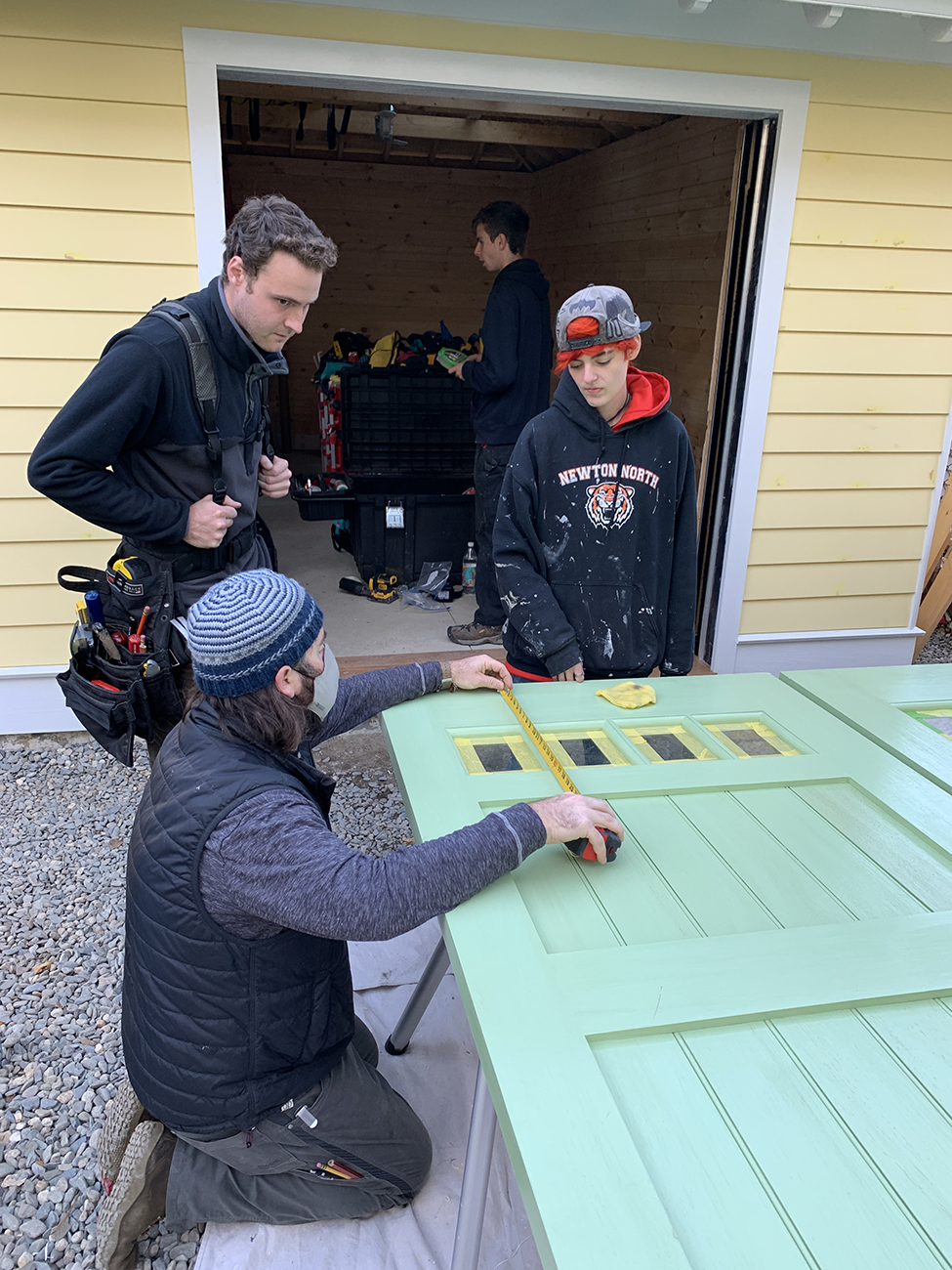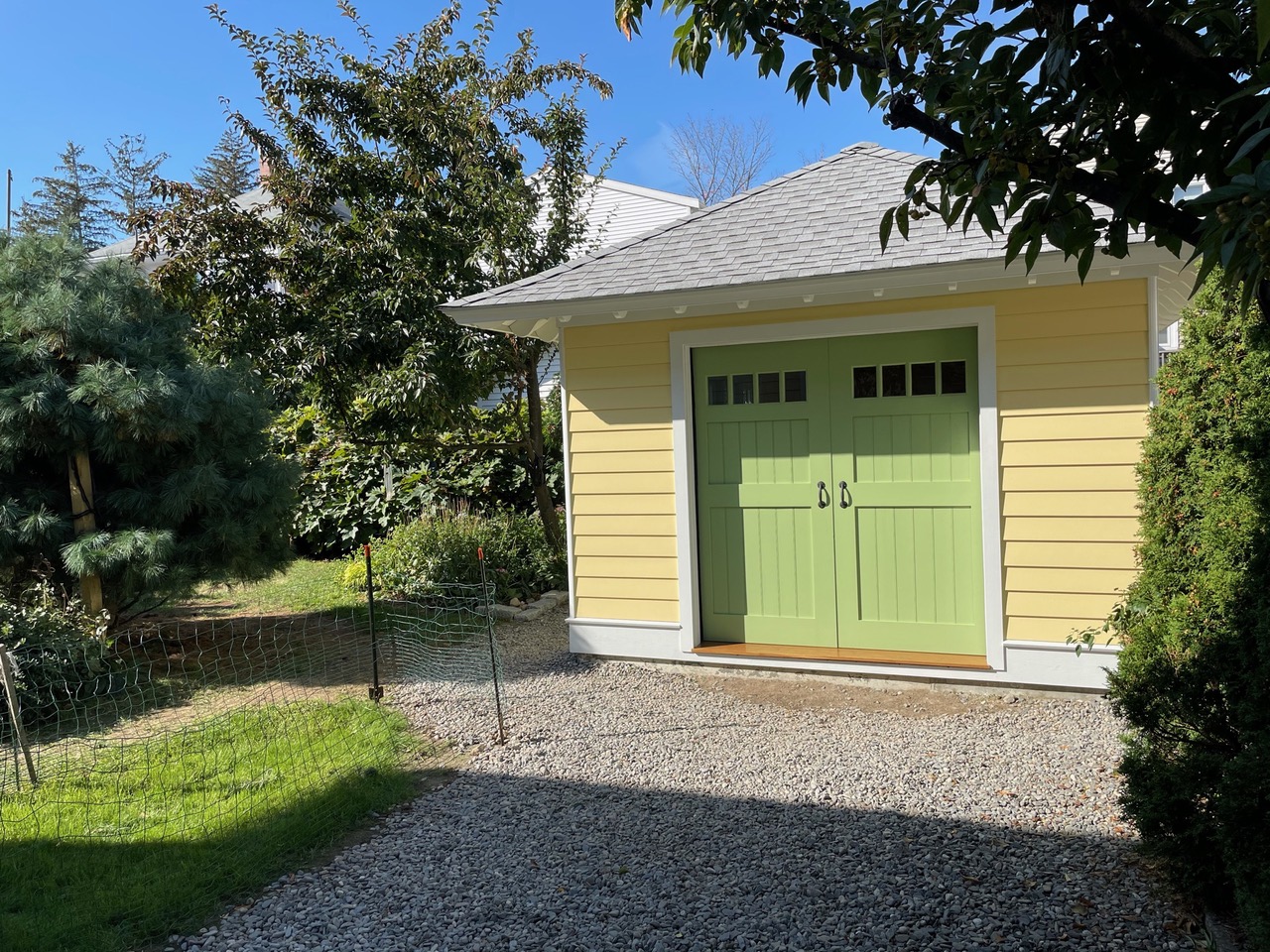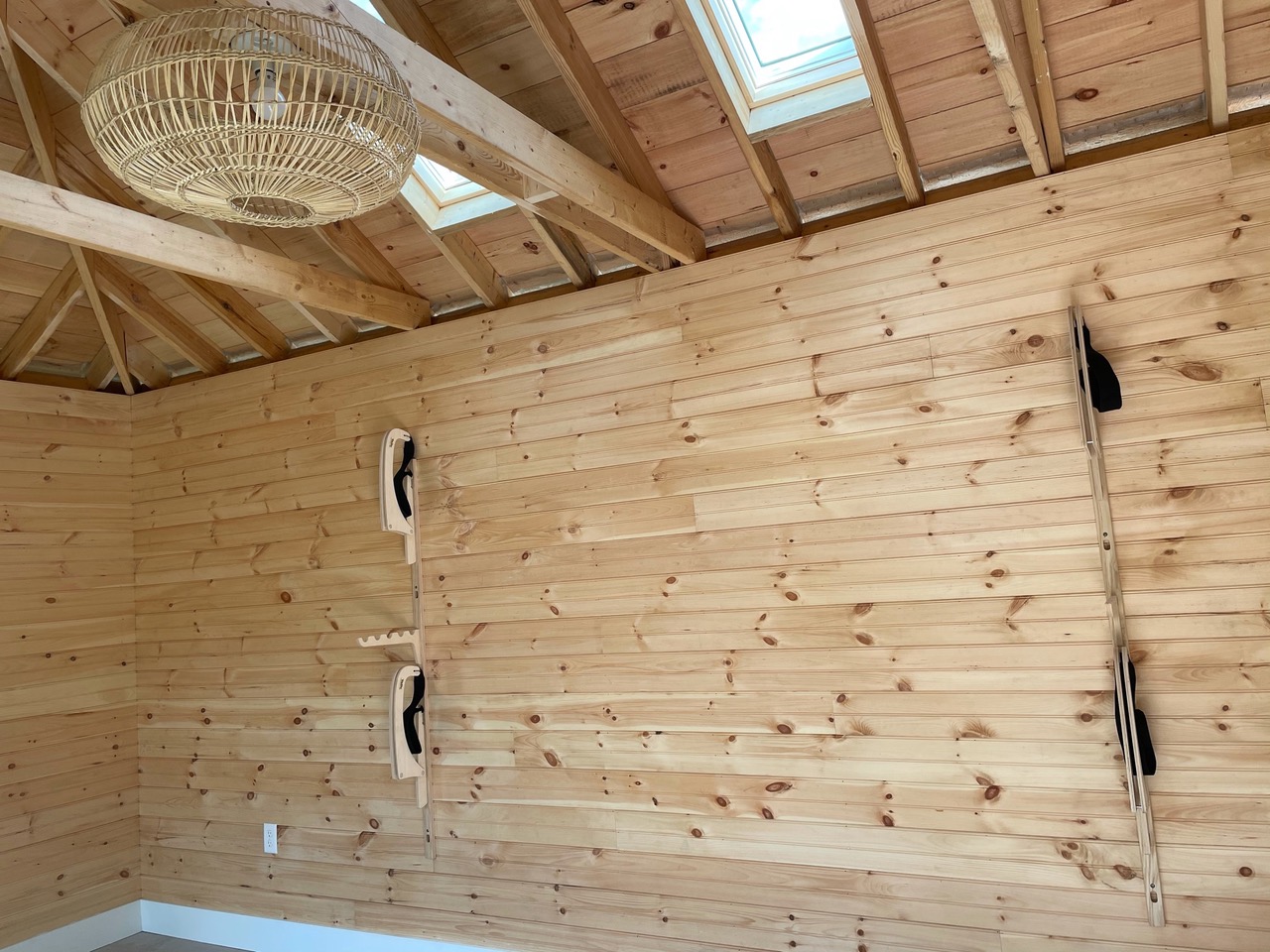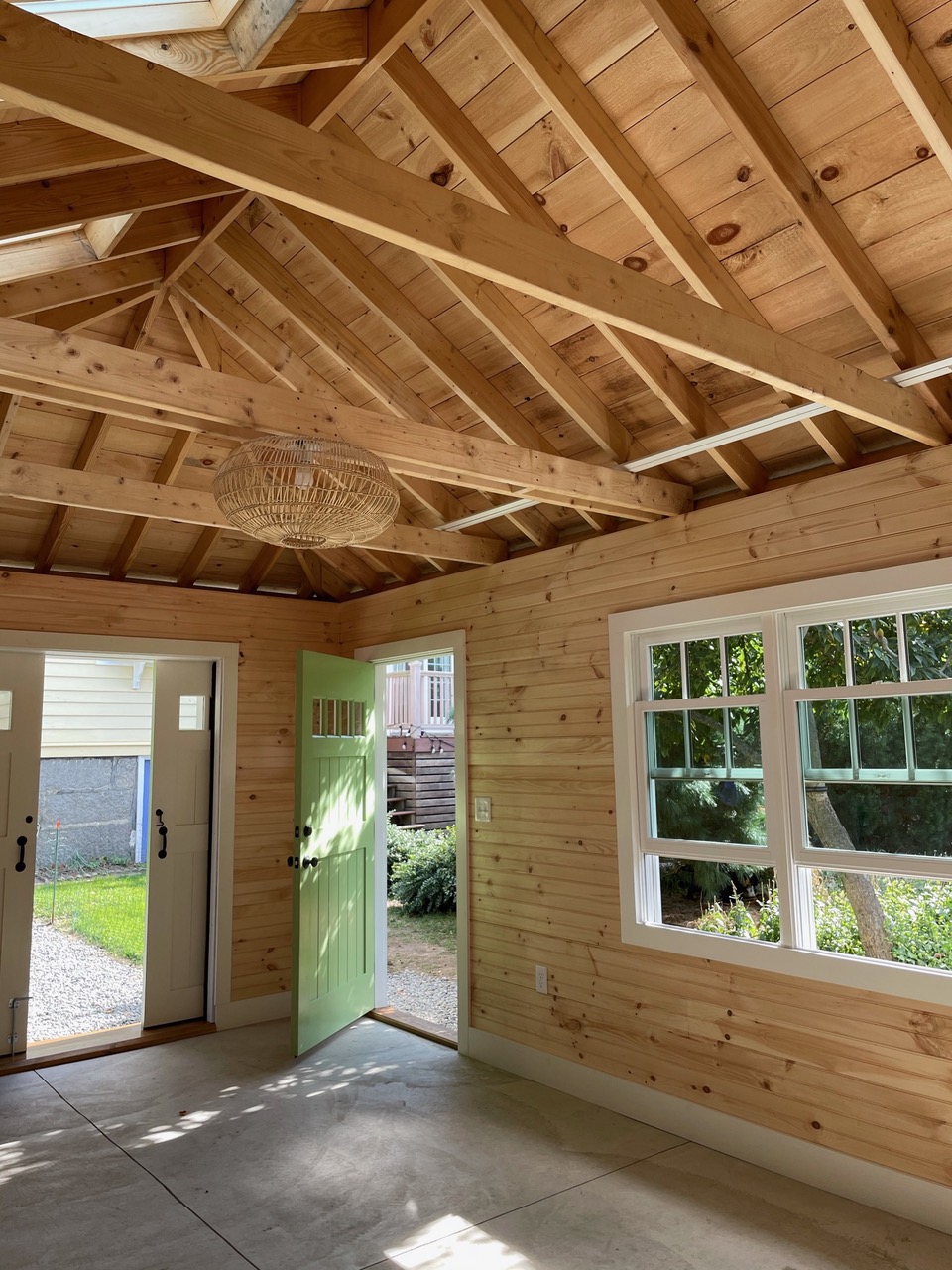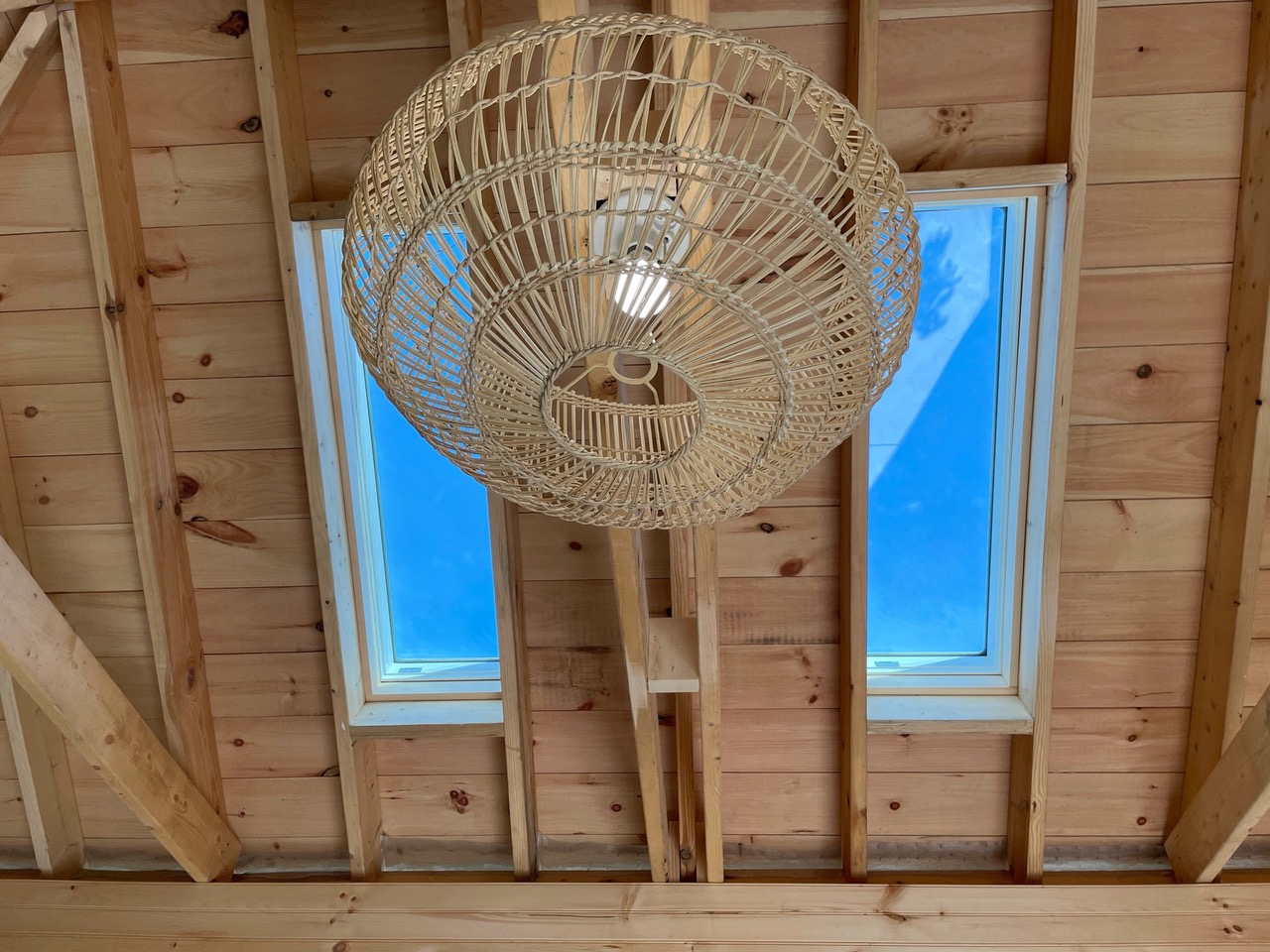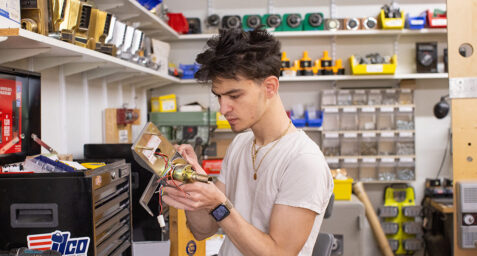Collaboration From the Ground Up
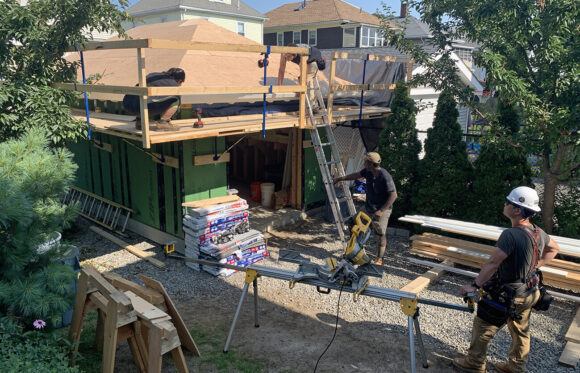
Categories
CarpentryOne of the many ways North Bennet Street School (NBSS) gives its Carpentry students a significant head start on real world experience is through class construction projects. Toward the end of each school year, students are sent into the field to work on a residential renovation project that dramatically accelerates their understanding of the trade, and quickly prepares them for employment after graduation.

The School has long been an option for the rare homeowner who has the right-sized project, an abundance of trust, and the patience to let the work proceed at an educational pace. One such project was proposed to the School in late summer 2020.
A storm in Quincy, Massachusetts had brought a very large tree down on the detached one-car garage of homeowners Mark and Merry Perry, causing catastrophic damage to the hundred-year-old, hip-roofed structure. Undaunted, the couple reached out to the School for help. The garage had been quite fashionable in the 1920s, and they wondered if NBSS might be interested in using the rebuild as a training ground for a future generation of carpenters. “We understood going in that the project timeline would be longer than a typical construction firm’s,” says Merry, “but we felt it was well worthwhile.”
For them, working with NBSS was just as sound a decision as working with any traditional general contractor—if not more so. The main difference between the School and a typical firm is that the emphasis is not on profitability; rather, each step of the process is a hands-on teaching opportunity for the entire class. For every component of the building, students learn the right way to execute the task, from laying out the foundation, to installing the ridge cap. There are no shortcuts, and everything is taught the right way.
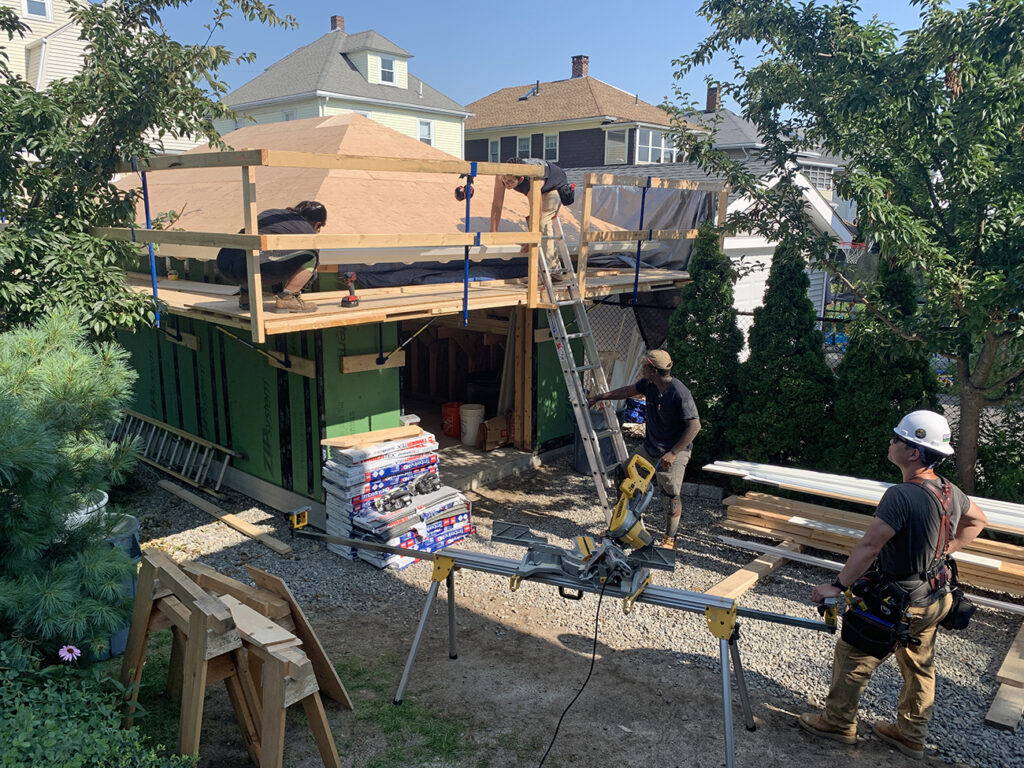
Peter Smith PC ’04, Carpentry Department Head and Instructor, explained that “absolutely everything had to be brought up to code.” Rebuilding was needed to meet current zoning laws and building codes, not insignificant in a city lot with limited space to adjust and 100 years of wear and settling on the original foundation. The plan would have to go back to square one, the perfect opportunity to teach a crew of budding carpenters how to build an entire structure.
Peter is a strong proponent of the role the carpenter plays as master builder, and strives to instill his students with not only a high degree of hands-on skill, but also with a sound understanding of structural layout and design that is the foundation for all architecture. Given his own background as a Preservation Carpenter (he is a 2004 graduate of the Preservation Carpentry program), he naturally wanted to honor the skill of the 1920s craftspeople who adorned the original building with handsome details like swoop-tailed hip rafters, continuous water tables, and hand-nailed clapboards.
Peter faithfully re-designed the old building with subtle updates that would ensure another century of dependable use, reincorporating historical elements that made the building special in the first place. He then worked with Cabinet & Furniture Making alumnus Eli Cleveland CF ’09, a Sketchup expert, to render the plans he drafted into a digital, 3D format that the students would use as the blueprint for the job.
Over the course of the next two class years (with delayed timing due to the pandemic), co-Instructor Brock Leiendecker PC ’16 led students on site in a hybrid educational/work setting, in a challenge that was “akin to sailing to Antarctica with a crew that’s never been to sea before,” joked Peter.
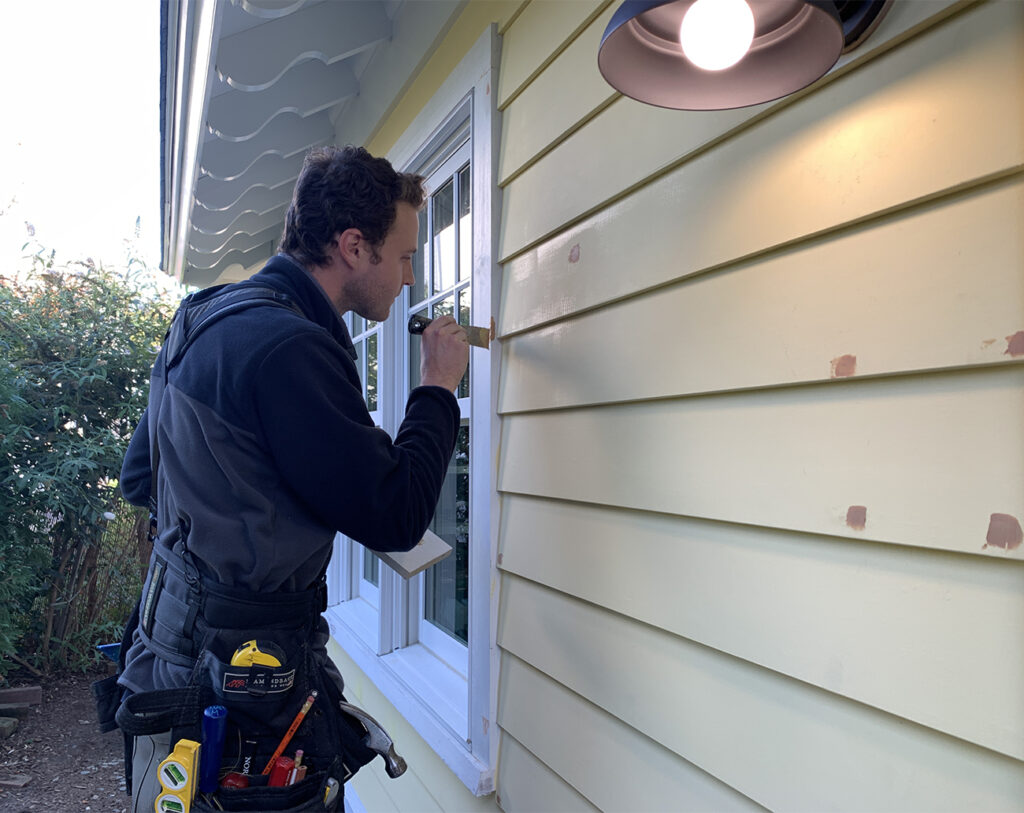
Even with the best instructors, mistakes happen. Xiomara Garcia CA ‘21, one of the students working on the project, explains, “Errors are part of the job, but it’s about how you bounce back.” When building the roof, the students cut away the thickness of the ridge twice from the same set of rafters, leaving half of them a scant ¾” too short to use. Rather than panic, Xiomara and her classmates shimmed and installed the ones still safe to use, and the remaining rafters were reused so that nothing went to waste. Xiomara is now able to draw upon that experience in her role as a Project Manager for a well known Boston-area construction firm, and as the Carpentry program’s Teaching Assistant this academic year.
The entire process did take a bit longer than a typical rebuild would have. Peter pointed out that the same tree also destroyed the next door neighbor’s garage, and while theirs was replaced faster, it was with a standard, vinyl-clad garage that wasn’t created with the same craftsmanship as what the students produced.
When asked their initial impressions of the finished renovation, homeowners Mark and Merry were very pleased with the outcome. “Everything looks just beautiful! We can no longer call it a garage; we call it a ‘garden house.’ It’s been transformed.” The end result was a testament to Peter’s design, Brock’s leadership, the students’ talents, the Perry’s perseverance and trust, and ultimately, the School’s proven method for turning driven students into skilled and competent carpenters.



